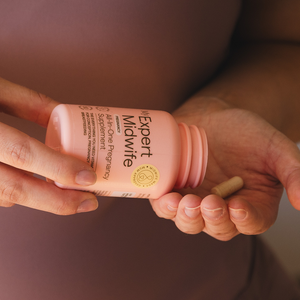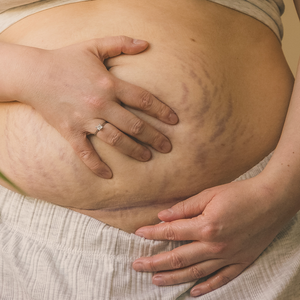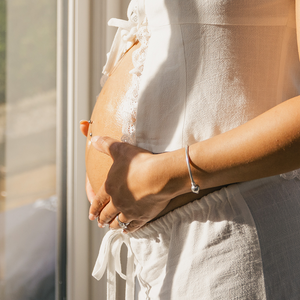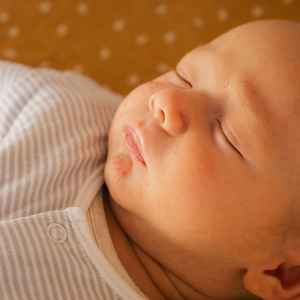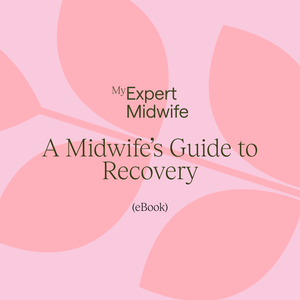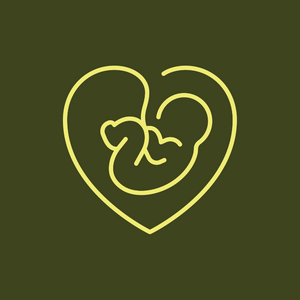Introduction
An emergency C-section is a Caesarean section that has not been planned by you and your obstetrician (doctor) during your pregnancy. It happens because it is considered the safest option to birth your baby according to your circumstances but can carry an increased risk of complications. In contrast, an elective c-section will have been discussed, booked and consented to well ahead of the procedure. Emergency caesarean sections make up 15% of all C-sections in the UK.
In this article, we will explore everything you need to know about emergency C-sections, including:
- How to prepare for an emergency C-section
- Reasons for an emergency C-section
- Categories of C-section
- What happens during an emergency C-section
- How long does an emergency caesarean take?
- What you can expect after an emergency C-section
- Is an emergency C-section harder to recover from?
- Recovering from an emergency C-section
- Ways to recover after having an emergency C-section
How to prepare for an emergency C-section
Having an emergency C-section can be an unsettling experience for pregnant women, especially when the possibility of it hasn’t been contemplated.
Preparing for a vaginal birth, if this is what you choose and wish for, will help to empower you and increase your chances of having one. However, there will always be times when the need for intervention in an emergency C-section becomes necessary, and it is best to prepare yourself for this possibility during pregnancy.
You can prepare yourself for the possibility of needing an emergency C-section by:
- Reading through this page and our supporting blogs on the benefits and risks of an emergency caesarean.
- Accessing our free midwife-written guides and midwife-led webinars.
- Including an ‘in I need an emergency C-section’ heading in your birth plan. Many of your choices and wishes can still be honoured and respected during most emergency C-sections. Make several copies of your birth plan so everyone can read it.
Examples of things to think about for your birth plan include:- delayed cord clamping
- skin-to-skin contact
- revealing your baby’s sex
- vitamin K for your baby
- delaying weighing (so you can do immediate skin-to-skin contact)
- seeding the microbiome
- Preparing a small bag with extra things you may need after a C-section. You can leave this bag at home for your partner/ family member to bring into the hospital if required or in the boot of your car.
Things that may come in handy after a C-section include:- straws (sitting up in bed to drink can be tricky)
- a spill-proof cup
- an extra-long mobile charger
- slip-on shoes/slippers
- peppermint tea bags (to help with trapped gas and shoulder pain following your operation – trust us!)
- a curved cushion to help you hold your baby – for cuddles and feeding
- Taking part in our antenatal classes
- Becoming familiar with the B.R.A.I.N. acronym to help you with decision making
- Inviting your partner, family and friends to read this blog so they know how best to support you after your emergency C-section
- Harvesting your colostrum to ensure your baby is fed this specialised ‘first milk’ even if you are too tired or unwell to feed them or if you are separated
Reasons for an emergency C-section
Doctors may choose to birth your baby via an unplanned or emergency caesarean section. In most cases, doctors will perform an emergency C-section for medical reasons. Still, women may occasionally choose to have an unplanned caesarean delivery for personal preferences or psychological factors.
Some of the most common reasons for having an emergency C-section include:
- Being booked for an elective C-section and your waters breaking and/or going into early labour
- Compromise to your health - for example, in the case of severe pre-eclampsia or other conditions
- Compromise to your baby’s wellbeing – for instance, if there are signs that your baby may be distressed (before or during labour)
- Heavy bleeding from your vagina
- Cord prolapse (where your baby’s cord slips down before baby after your waters break)
- A failed induction of labour – where the process of induction does not get you into labour
- Labour not progressing, with or without compromise to your or your baby’s well being
- Malpresentation of your baby during labour – where it is not your baby’s head presenting, but their feet, bottom or another part of their body. This does not always require birth by C-section, but your circumstances and wishes may determine it best
- Failed instrumental delivery – where there is a failed attempt to assist in delivering your baby with forceps or a ventouse
Categories of C-section
The different reasons why you may need or be advised to have an emergency C-section will determine the urgency by which the procedure needs to take place. To make communication clear among all the members of the multidisciplinary team, emergency C-sections are classified into three categories which define how urgently a baby needs to be born:
- A category 3 C-section has no strict time limit. As long as there is no immediate risk to you or your baby, preparations can begin to bring your operation forward.
- You may need a category 3 C-section if, for example, you are booked for an elective C-section, and your waters break and/or you go into early labour. - A Category 2 C-section allows up to 90 minutes from decision to birth of baby, and reasons for requiring one could include compromise to your health or your baby, for example:
- In the case of severe pre-eclampsia or other conditions, or if labour is not progressing, there are signs that your baby may be distressed. - A Category 1 (or ‘Crash’) C-section indicates that the baby needs to be born as soon as possible and no longer than 30 minutes from when the decision is made.
- Reasons for needing one can include evidence that your baby is severely distressed, heavy bleeding from your vagina and cord prolapse (when the baby’s umbilical cord slips down before baby after your waters break).
In most cases, the decision to deliver your baby via an emergency C-section will be discussed with you by your doctor and midwife. You should sign a written consent form for category 2 & 3 emergency C-sections. In the case of a category 1 EMCS, verbal consent is acceptable, as time is often minimal.
How long does an emergency caesarean take?
The whole procedure usually takes 40-50 minutes from entering the operating room to leaving it. This includes the lengthiest part of the operation, which is closing (stitching) all the different layers after your baby has been born.
The time between your skin being cut and your baby being born is surprisingly short, often taking less than 6-7 minutes.
What happens during an emergency C-section
Although emergency C-sections can be very similar to elective or planned C-sections, some things will be different:
- Discussions with your midwife and obstetrician (doctor) are often, although not always, somewhat more rushed. It can help to feel familiar with the B.R.A.I.N. acronym.
- You may need to read and sign the consent form (or consent verbally) whilst you are in labour and feeling very tired. Your doctors and midwives will make sure they talk to you between contractions rather than during them.
- In most cases, you will be able to have a spinal or epidural anaesthetic, or if you already have an epidural, you could have this topped up – which will work in the same way. In the rare event that your baby requires to be born very quickly and there is no time to wait for the anaesthetic to work, you may need to be put under general anaesthesia.
- You will need I.V. (intravenous) access for fluids and other medicines. This will be in the form of a cannula, inserted typically in the back of your hand or your arm. You need to have one before any anaesthetic is administered.
- When the cannula is inserted, blood will be taken to check your iron levels, as well as your blood group and antibody screen (necessary if you were to need a transfusion)
- A urinary catheter (a long, soft tube) will be inserted into your bladder via your urethra to keep your bladder empty for the operation.
- The pubic hair at the top of your bikini may be shaved - if required and if time allows.
- In theatre, things will be done similarly to that of a planned C-section if you require a Category 2 or 3 C-sections but will move very quickly if your emergency C-section is a Category 1.
- Your skin will be cleaned and draped, and an incision (cut) will be made at your bikini line. This is usually 10-20 cm long.
- Your abdominal muscles will be parted, and another incision will be made into your uterus.
- As the surgeons help your baby be born, you may feel some pushing and pulling.
- A neonatal (baby) doctor or team will most likely be present in the theatre. Depending on the reason for your emergency C-section, your baby may need to be immediately checked by them once they are born.
- If you need a general anaesthetic and your baby is stable, he/she will be given to your partner for a cuddle and skin-to-skin contact until you come out of the theatre. If your baby needs treatment in the special care baby unit, your partner will be able to join them as soon as your baby is stable.
- Closing the wound can be the longest part of the operation, as there are several layers to stitch.
- Once your wound is closed and dressed, you will be transferred to the recovery room. Here, you will be closely monitored, given something to eat and drink, and assisted in feeding and skin to skin with your baby.
What you can expect after an emergency C-section
Immediately after theatre:
- Hospital staff will take you to a recovery area where you will stay until you are well enough to be transferred to the postnatal ward.
- You’ll be assisted in having skin-to-skin contact with your baby and feeding them.
- If you weren’t already wearing them, you’d be fitted with some pressure stockings to help reduce the risk of blood clots.
- If you feel well enough, you’ll be offered something light to eat and drink.
On the ward:
- You will not be able to get out of bed for a few hours and will need assistance when you are ready.
- Midwives and other staff will look after you and help you with baby care and feeding.
- You will need to take things slowly and take regular pain relief, so you don’t feel any pain and to help manage your recovery.
If your baby is in the neonatal unit:
- You will have to wait until you are well enough and be taken there in a wheelchair to see them. This can be tough.
- Ensure you and your partner’s phones are charged, so they can video-call you when they’re visiting the baby.
- You will be given a side room, so you don’t have to share a bay with other mothers and babies.
If you have gone through labour before your EMCS, you will feel considerably more tired and weaker than a woman who has had a vaginal delivery or elective C-section, so be extra kind to yourself.
The length of your stay in the postnatal ward will depend on your and your baby’s wellbeing.
Is an emergency C-section harder to recover from?
An emergency C-section can be harder to recover from, depending on your circumstances.
Here are some of the things that can make a recovery after an emergency C-section harder:
- Being in labour for a long time. The longer you have been in labour before your C-section, the more tired and weakened you will likely feel after your baby’s birth.
- Being in hospital for a few days. For example, because your labour was being induced or because you or your baby were being closely monitored due to concerns about your wellbeing.
- Lack of sleep and stress. The relentless pace of hospital life, a lack of fresh air, and the potential stress and worry can tire you physically, mentally and emotionally, which will have a knock-on effect on your recovery.
- Prior medical issues. Having been unwell before your operation – for example, if you had pre-eclampsia, uncontrolled diabetes, vaginal bleeding or a condition/illness that made you feel sick.
Ways to recover after having an emergency C-section
An emergency C-section birth is major abdominal surgery, and recovery time can vary from one woman to another. Your abdominal muscles, which have supported your growing womb and may have been weakened during pregnancy, will have been parted during your C-section and can feel quite sore. Different layers of tissue will be cut during the surgery and stitched back together, and these will need time to heal.
Here are some ways you can recover after an emergency c-section:
Avoid moving and lifting things
Try to do less moving and lifting of things. Have everything you need close by and learn to slowly turn to your side and push yourself up with your top arm to get out of bed. Use plenty of cushions to help with comfort and posture and make holding and feeding your baby easier. And hold a small pillow/cushion against your lower tummy when getting up from the sofa, bed, car, or walking up the stairs. This also provides welcome support when you laugh or cough.
Rest and nourishment
Ensure you are eating healthy, nutrient-dense foods. Arrange for help and support from your loved ones - so daily chores, food prep, childcare for older siblings and general life are taken care of. Also , do as little as you can and allow yourself to be looked after.
Use a perineal spray
We recommend using a perineal spray such as Spritz for Bits during the first few weeks after the birth. Once the dressing has been removed and your wound is healing normally, use Spritz for Bits as often as needed to help relieve soreness and itchiness.
Use bath salts
A regular self-care routine, including a soothing bath, can contribute to your physical and emotional recovery after childbirth. Add in some Soak for Bits Bath Salts to help with relaxation.
Both products are packed with essential oils that have anti-inflammatory and anti-bacterial properties to help soothe swelling and bruising and clean and protect.
Massage your scar with oil
We recommend using our Super Scar Recovery Oil. Once your wound is considered well healed (usually around six weeks after your C-section), start using Super Scar Recovery Oil. It has been expertly developed to help improve the appearance and condition of scar tissue through regular C-section scar massage.
In summary
An emergency c-section may be a daunting experience. Knowing why you may need one and what to expect from the procedure will help you put your mind at ease. If you’ve had a caesarean birth and decide to get pregnant again, you may be able to have a vaginal birth after caesarean (VBAC). If you have any specific questions or queries, speak to your doctor or midwife for more specialised and personal advice.
